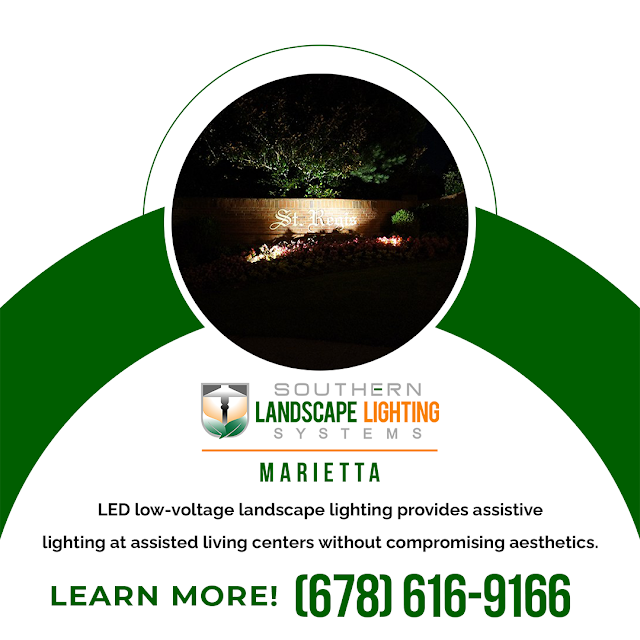Southern Landscape Lighting Systems of Alpharetta, GA, designs, installs, and services residential and commercial LED landscape lighting systems in the metro Atlanta area. The lighting team is dedicated to casting homeowners, prospective homebuyers, and professional home builders in the best light possible.
The National Association of Home Builders recently published a summary of a larger study involving 3,247 prospective and current homebuyers. The survey, conducted within the context of the pandemic, yielded key findings that have implications for professional home builders and the residential LED landscape lighting design and installation industry.

Below are some key findings of the study that have a direct bearing on landscape lighting and how landscape lighting can put professional home builders in a better light.
#1. Preferences have changed.
Households with a remote worker and/or virtual students are most likely to be affected by the pandemic: 43% of households with at least one remote worker and one virtual student affirm that their housing preferences have been altered by the pandemic, compared to only 9% of those with neither teleworkers nor virtual students.
The landscape lighting connection: The home has become a terminal for work, school, entertainment, recreation, and community. With more time spent at home, more homebuyers will explore curb appeal improvement options, which include landscape lighting.
#2. Outdoor amenities that expand the outdoor living space figure prominently on the homebuyer’s wish list.
Seventy-five percent or more of homebuyers want the following outdoor features: exterior lighting, a patio, a front porch, a rear porch, and a deck. The desire for other exterior features, including an outdoor kitchen, outdoor fireplace, or built-in grill, increases significantly with a corresponding increase in the price point of the home. Homebuyers are willing to fund projects that expand and enhance outdoor living spaces.
The landscape lighting connection: A patio, deck, outdoor kitchen, or fireplace needs landscape lighting to maximize safety. Also, landscape lighting extends the time available to enjoy outdoor living spaces. Activities can continue well into the evening hours.
#3. Homebuyers want energy efficiency.
Homebuyers are concerned (78%) about the environmental impact of their homes. Over half of homebuyers (57%) are willing to spend an extra $5,000 upfront to save $1,000 per year on utilities.
The landscape lighting connection: Efficient exterior lighting finds its way into the top five most wanted energy-efficient features. Lighting methods that use less energy than traditional bulbs are important to more than 70% of homebuyers. Converting a traditional halogen landscape lighting system to an LED low-voltage landscape lighting system makes complete sense to cost-conscious homebuyers who value sustainability. Currently, LED landscape bulbs last anywhere from 25,000 to 40,000 hours, depending on the situation. Homebuyers can save money while saving the Earth.
#4. Technology is a top priority.
Energy efficiency and home security are top tech priorities. A programmable thermostat, security cameras, video doorbell(s), wireless home security system, and a multi-zone HVAC system top the tech list.
The landscape lighting connection: A landscape lighting system enhances the effectiveness of a security system or other home security technology. Discreet, strategically positioned landscape lighting is necessary if a home security system is to provide the desired protection. Dangerous shadows and poorly lit walking paths can become hazardous.
#5. Homebuyers are conscientious about first impressions.
Homebuyers are thinking about the color of their front door. 24% want a white door, while 17% prefer that the door be brown.
The landscape lighting connection: Careful thought about the color of the front door indicates that the homebuyer is interested in curb appeal and especially the first impression a home evokes. An elegant, professionally designed, and installed LED low-voltage landscape lighting system is a pivotal factor in creating that breathtaking first impression.
#6. Homebuyers are thinking multi-generationally and with an accessibility view.
Multi-generational housing is a distinct preference for minorities.
- 53% of Hispanics
- 50% of African Americans
- 46% of Asians
In terms of accessibility, the top five most wanted features are non-slip floor surfaces and an entrance without steps. Sixty percent of homebuyers see these two amenities as essential or desirable.
The landscape lighting connection: The presence of older family members in the home necessitates that the yard is illuminated enough to be easily navigable. LED landscape lighting also complements accessibility features by making sure that walkways and entrances are safe and well-lit.
#7. Clean and bright are top priorities.
According to the study, the following features came in at the top of the list: “A laundry room and exterior lighting are the two most wanted features in a home (both rated essential or desirable by 87% of buyers). The Most Wanted List also includes two other exterior features: a patio (82%) and a front porch (75%)…”
The landscape lighting connection: Homeowners themselves express great interest in exterior lighting, as well as in patios and porches, which would benefit from the application of a lighting system.
Putting the Homebuyer and the Homebuilder in the Best Light
Since nearly 60% of homebuyers want new home construction, professional homebuilders should consider including LED low-voltage landscape lighting in their building plan to ensure the homebuyer is truly satisfied with the final product. The best time to involve a professional landscape lighting designer in the homebuying or homebuilding process is at the very beginning of the process when negotiations are taking place, and plans are being drawn.







